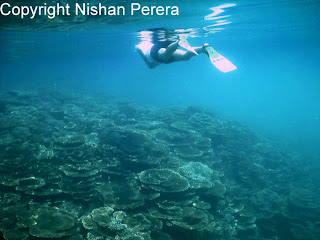

After a one hour boat ride we scan the seabed with an echo sounder but cannot find anything except an empty expanse of sand. We have nothing but an obscure GPS point obtained from a fisherman. We drop anchor and after some time it snags on something. Its either the wreck we are looking for or a deep reef. Trusting our instincts we enter the water and descend in a heavy current. It takes nearly 8 minutes to reach the bottom 45 meters below the surface, but finally, in front of us is a small wreck sitting upright on a sandy floor. This is the Battery Barge. Known only to a few and the reason for our curiosity. Time is limited. We have only 5 minutes on the wreck as we have not planned for long decompression stops. The objective is to confirm the presence of the wreck and evaluate its potential for future photography and exploration. At this depth and fighting against the stiff current we feel the effect of nitrogen narcosis. Simple tasks such as focusing the camera and adjusting a strobe take more effort and concentration than usual.
The wreck is broken into two parts. Its entire length covered in colourful soft coral and sea fans. Black coral bushes sway in the current as cardinalfish dart among the corals. A few small groupers are on the hunt and four large lionfish hover motionless in an attempt to ambush an unwary fish. All around, a school of snappers zig zag the wreck like rush hour traffic. Despite its small size the barge is an oasis of life in a vast sandy desert. If only we had a bit more time.............












































